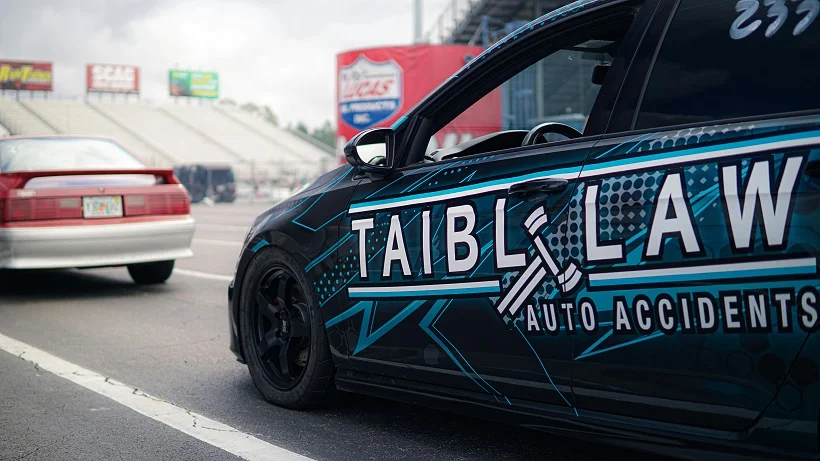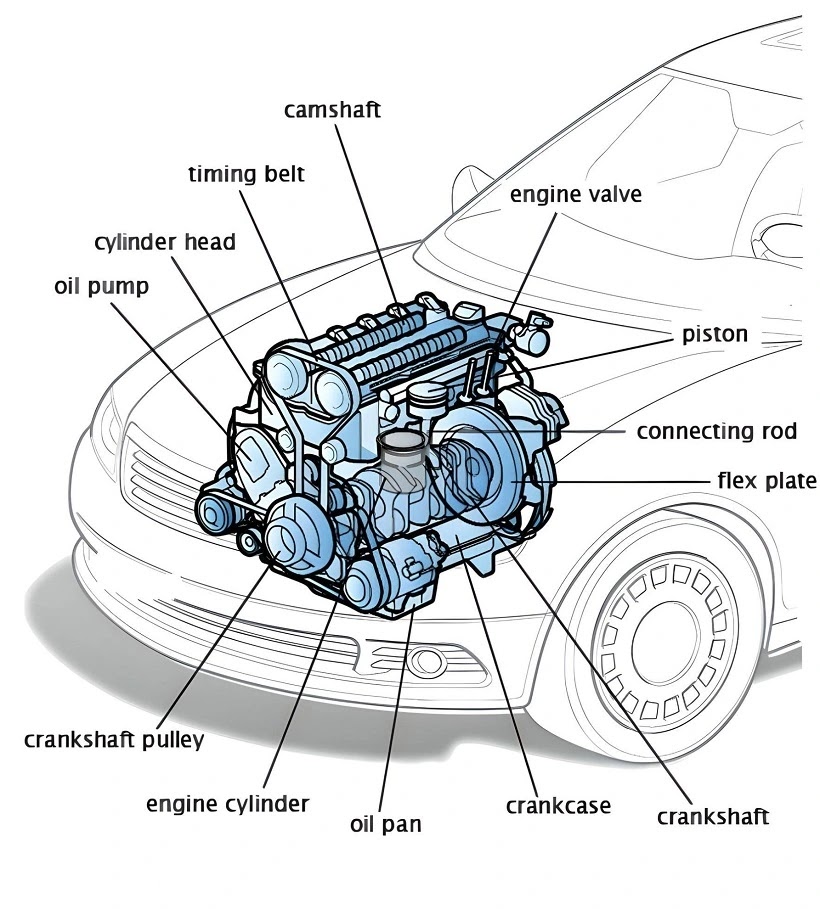Brakes are an essential safety feature in any vehicle, and when they start making unusual sounds, it's something you should never ignore. One of the most alarming noises that can occur is a loud grinding noise when braking. This noise often indicates a serious problem that requires immediate attention. In this comprehensive guide, we will explore the causes, risks, and solutions related to a loud grinding noise when braking. This article aims to help you understand why your brakes might be making this noise and what you can do about it.
👉What Does a Loud Grinding Noise When Braking Indicate?
When you hear a loud grinding noise when braking, it usually means that there is metal-on-metal contact happening within your braking system. This sound is often a signal that your brake pads have worn down completely, allowing the metal of the brake calipers to rub directly against the metal of the rotors. This friction not only creates the loud grinding noise but can also cause significant damage to your braking system if left unchecked.
Common Causes of a Loud Grinding Noise When Braking
Understanding the common causes of this noise can help you identify the problem quickly and take appropriate action. Below are some of the most common reasons why you might hear a loud grinding noise when braking:
1. Worn-Out Brake Pads• Overview: Brake pads are designed to wear down over time, but when they become too thin, the metal backing plate can come into contact with the brake rotor, causing a grinding noise.
• Symptoms: In addition to the loud grinding noise, you may also notice reduced braking performance, longer stopping distances, and possibly even a brake warning light on your dashboard.
• Solution: Replacing the brake pads is essential. In some cases, the rotors may also need to be replaced if they have been damaged by prolonged metal-on-metal contact.
2. Debris Between the Brake Pad and Rotor• Overview: Small rocks, dirt, or other debris can become lodged between the brake pad and rotor, causing a grinding noise when you apply the brakes.
• Symptoms: The grinding noise might be intermittent and could vary depending on the debris's location within the brake system.
• Solution: A thorough cleaning of the brake components may resolve the issue. If the debris has caused damage to the brake pads or rotors, replacement may be necessary.
3. Faulty Brake Calipers• Overview: The brake caliper's job is to press the brake pads against the rotor to slow down or stop the vehicle. If the caliper becomes stuck or fails to function correctly, it can cause uneven wear on the brake pads and lead to a grinding noise.
• Symptoms: In addition to the grinding noise, you may notice your car pulling to one side when braking or a burning smell from the affected wheel.
• Solution: Replacing or repairing the faulty caliper can solve the problem. It is also essential to inspect the brake pads and rotors for any damage caused by the faulty caliper.
4. Worn Brake Rotors• Overview: Brake rotors can wear down over time, becoming thin and uneven. This wear can lead to a loud grinding noise when braking, especially if the brake pads are also worn.
• Symptoms: You may experience vibrations in the brake pedal, uneven braking, and visible grooves or scoring on the rotor surface.
• Solution: If the rotors are too worn or damaged, they will need to be replaced. In some cases, rotors can be resurfaced, but this depends on their condition.
5. Improper Installation of Brake Components• Overview: If brake components such as pads, rotors, or calipers are not installed correctly, it can lead to misalignment and cause a grinding noise when braking.
• Symptoms: The grinding noise may start immediately after a recent brake job, and you might notice uneven wear on the brake pads or rotors.
• Solution: Have a qualified technician inspect the brake system to ensure everything is installed correctly. Adjustments or reinstallation may be necessary.
6. Rust or Corrosion on Brake Components• Overview: Rust or corrosion can form on the brake rotors, especially if the car has been sitting unused for an extended period. This rust can cause a grinding noise when the brakes are applied.
• Symptoms: The grinding noise may be more noticeable after the vehicle has been parked for a while, and it may decrease as the rust wears off with use.
• Solution: Light rust can often be removed through normal driving. However, if the rust is severe, the rotors may need to be resurfaced or replaced.
7. Low-Quality Brake Pads• Overview: Cheap or low-quality brake pads may not perform as well as higher-quality ones, leading to increased wear and a higher likelihood of causing a grinding noise.
• Symptoms: The noise may occur shortly after installing new, low-quality brake pads, and you may notice other issues such as increased brake dust or uneven wear.
• Solution: Investing in high-quality brake pads can prevent this issue. If you've recently installed low-quality pads, consider replacing them with better ones.
👉The Risks of Ignoring a Loud Grinding Noise When Braking
Ignoring a loud grinding noise when braking can lead to several severe consequences. Understanding the risks associated with this noise can help you appreciate the importance of addressing the issue promptly.
1. Reduced Braking Performance• A loud grinding noise when braking often indicates a problem that can significantly reduce your vehicle's braking efficiency. This reduction in performance can increase stopping distances, making it harder to avoid collisions.
2. Damage to Other Brake Components• Allowing the grinding noise to continue unchecked can cause damage to other parts of the braking system, such as the rotors, calipers, and even the wheel bearings. This damage can lead to costly repairs and further compromise your vehicle's safety.
3. Increased Repair Costs• The longer you wait to address a loud grinding noise when braking, the more damage can occur, leading to higher repair costs. What might start as a simple brake pad replacement could escalate into a need for new rotors, calipers, and other components.
4. Safety Hazards• A loud grinding noise when braking is often a sign of a serious issue that could compromise your safety. Driving with faulty brakes increases the risk of accidents, which could result in injury or even death.
👉Diagnosing a Loud Grinding Noise When Braking
If you hear a loud grinding noise when braking, it's crucial to diagnose the problem quickly. Below are steps you can take to identify the issue:
1. Visual Inspection. Start by visually inspecting the brake components. Look for signs of wear, such as thin brake pads, scored rotors, or any visible debris lodged in the brake system.
2. Listen for the Noise. Pay attention to when the grinding noise occurs. Does it happen every time you brake, or only at certain speeds? Does it come from a specific wheel? This information can help pinpoint the problem.
3. Feel for Vibrations. If you feel vibrations in the brake pedal or steering wheel when braking, it could indicate warped rotors or other issues within the braking system.
4. Check the Brake Fluid. Low brake fluid levels can affect the performance of the braking system, leading to noises and other issues. Check the brake fluid reservoir to ensure it is at the proper level.
5. Consult a Professional. If you're unable to diagnose the issue yourself, it's essential to consult a professional mechanic. They have the tools and expertise to identify and fix the problem correctly.
👉Solutions for a Loud Grinding Noise When Braking
Once you've identified the cause of the loud grinding noise when braking, it's time to take action. Below are some common solutions:
1. Brake Pad Replacement. If worn-out brake pads are the cause of the grinding noise, replacing them is the most straightforward solution. Make sure to choose high-quality brake pads to avoid future issues.
2. Rotor Resurfacing or Replacement. If the rotors are damaged, they may need to be resurfaced or replaced. Resurfacing involves machining the rotor surface to remove any grooves or scoring, while replacement is necessary if the rotor is too thin or damaged.
3. Caliper Repair or Replacement. If a faulty caliper is causing the noise, it may need to be repaired or replaced. Ensuring that the caliper is functioning correctly is essential for the overall health of the braking system.
4. Cleaning the Brake Components. If debris is causing the grinding noise, a thorough cleaning of the brake components can resolve the issue. This cleaning can be done during a routine brake inspection.
5. Rust Removal. If rust is the culprit, light rust may wear off with regular driving. However, more severe rust may require rotor resurfacing or replacement.
6. Upgrading to High-Quality Brake Pads. If low-quality brake pads are causing the noise, upgrading to higher-quality pads can prevent the issue from recurring. Look for pads made from durable materials that offer consistent performance.
👉Preventing a Loud Grinding Noise When Braking
Preventing a loud grinding noise when braking is possible with proper maintenance and care. Below are some tips to keep your brakes in good condition:
1. Regular Brake Inspections. Schedule regular brake inspections to catch any issues before they become severe. A professional mechanic can check the condition of your brake pads, rotors, and other components.
2. Use Quality Brake Parts. Invest in high-quality brake pads, rotors, and other components. Quality parts may cost more upfront, but they often last longer and perform better, reducing the likelihood of issues.
3. Avoid Hard Braking. Frequent hard braking can cause excessive wear on your brake pads and rotors, leading to noise and other problems. Try to brake gradually and avoid sudden stops whenever possible.
4. Keep Your Brakes Clean. Regularly cleaning your brakes can prevent debris from causing noise and damage. This cleaning is especially important if you drive in dusty or dirty conditions.
5. Address Issues Promptly. If you notice any unusual noises, vibrations, or other issues with your brakes, address them promptly. Ignoring these signs can lead to more significant problems and higher repair costs.
💬Final Thoughts
A loud grinding noise when braking is not something to ignore. It often indicates a serious issue within the braking system that requires immediate attention. Whether it's worn-out brake pads, debris, faulty calipers, or other causes, addressing the problem quickly can prevent further damage, reduce repair costs, and most importantly, ensure your safety on the road.
By understanding the common causes, risks, and solutions related to a loud grinding noise when braking, you can take the necessary steps to keep your vehicle's brakes in top condition. Regular maintenance, using quality parts, and being attentive to any unusual sounds or symptoms can help you avoid the stress and danger associated with faulty brakes. Don't wait until it's too late—if you hear a loud grinding noise when braking, take action today.
Want more videos all about auto?
Subscribe to our YouTube channel 👉Cartech Home


















